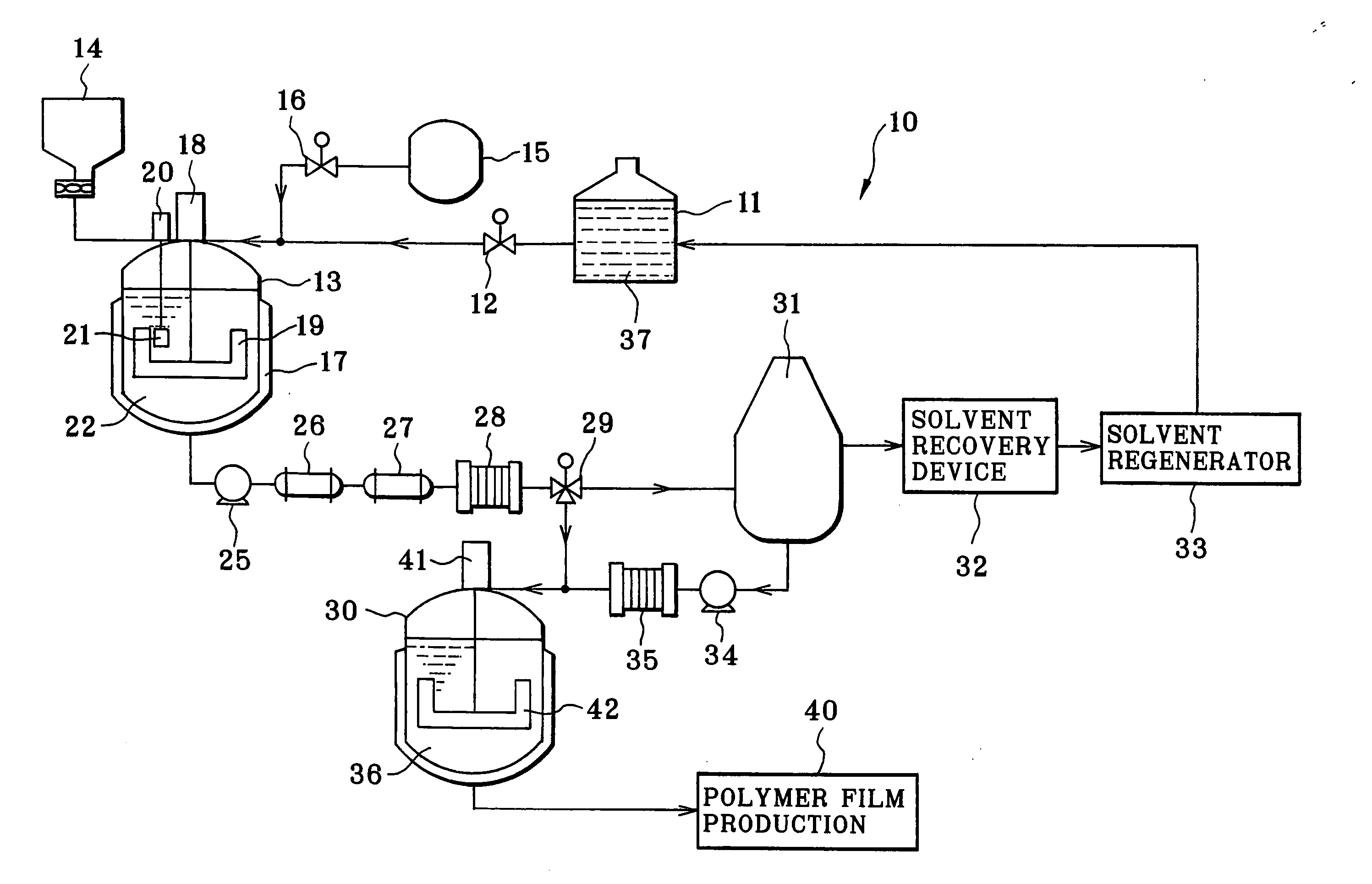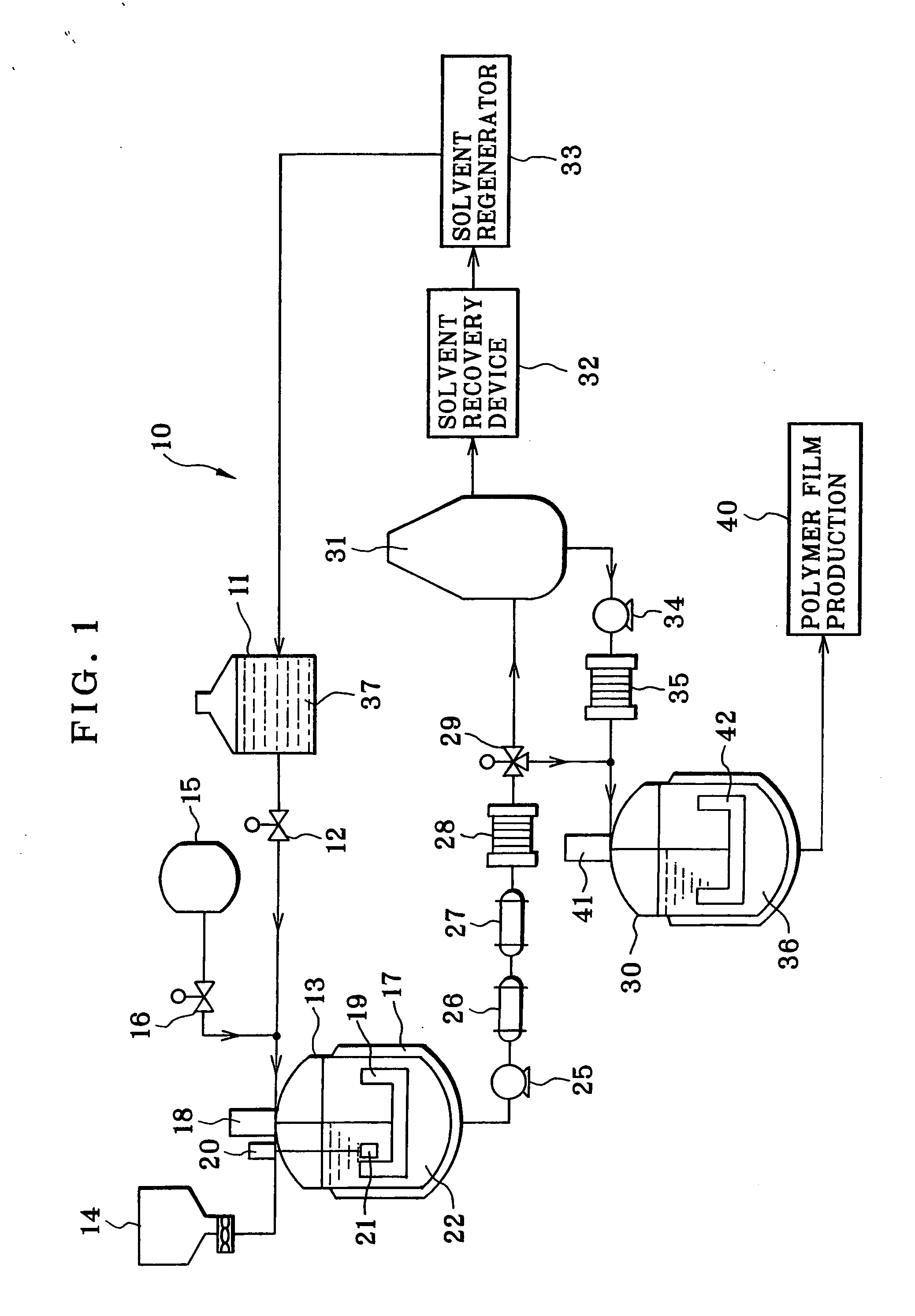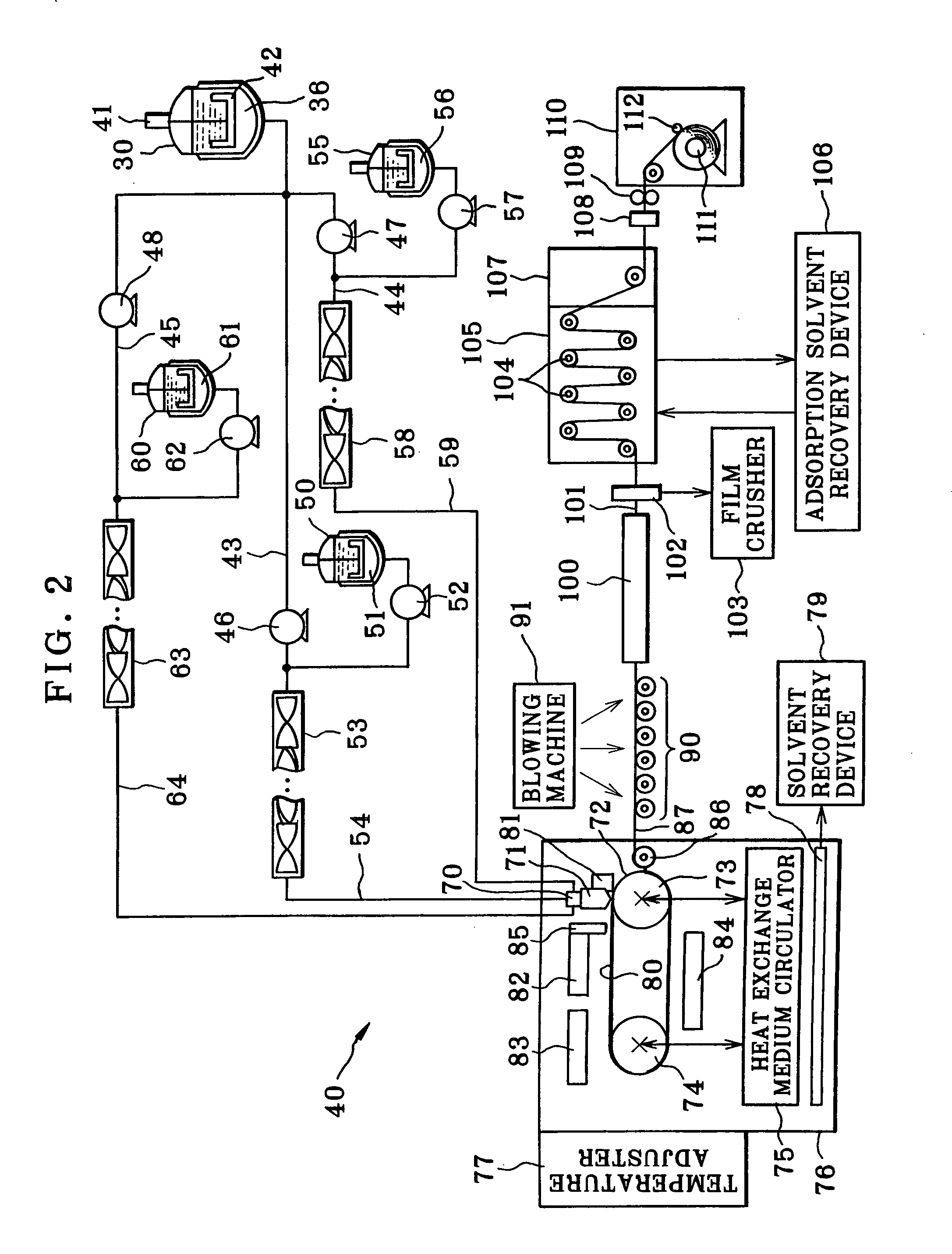Solution casting process and cellulose ester film
- Summary
- Abstract
- Description
- Claims
- Application Information
AI Technical Summary
Benefits of technology
Problems solved by technology
Method used
Image
Examples
example 1
[0192] Example 1 is described now. Note that the present invention is not limited to this example. Experiment 1 will be described in detail. However, Experiments 2 and 3 and Comparisons that are Experiments 4-6 will be described mainly for their differences from Experiment 1. Their results will be indicated in Table 1.
[0193] [Material for Dopes]
[0194] 100 Parts by weight of particles of cellulose triacetate (acetyl substitution degree: 1.00, propionyl substitution degree: 1.70, substitution degree as total of acyl substitution: 2.70, viscosity average degree of polymerization (DP): 260, water content: 0.2 wt. %, viscosity of 6 wt. % dichloro methane solution: 150 mPa·s, average particle diameter and standard deviation of the particle diameter: 1.5 mm and 0.4 mm);
[0195] 320 parts by weight of dichloro methane, as a first solvent;
[0196] 83 parts by weight of methanol, as a second solvent;
[0197] 3 parts by weight of 1-butanol, as a third solvent;
[0198] 7.6 parts by weight of triph...
PUM
| Property | Measurement | Unit |
|---|---|---|
| Fraction | aaaaa | aaaaa |
| Fraction | aaaaa | aaaaa |
| Nanoscale particle size | aaaaa | aaaaa |
Abstract
Description
Claims
Application Information
 Login to View More
Login to View More - R&D
- Intellectual Property
- Life Sciences
- Materials
- Tech Scout
- Unparalleled Data Quality
- Higher Quality Content
- 60% Fewer Hallucinations
Browse by: Latest US Patents, China's latest patents, Technical Efficacy Thesaurus, Application Domain, Technology Topic, Popular Technical Reports.
© 2025 PatSnap. All rights reserved.Legal|Privacy policy|Modern Slavery Act Transparency Statement|Sitemap|About US| Contact US: help@patsnap.com



